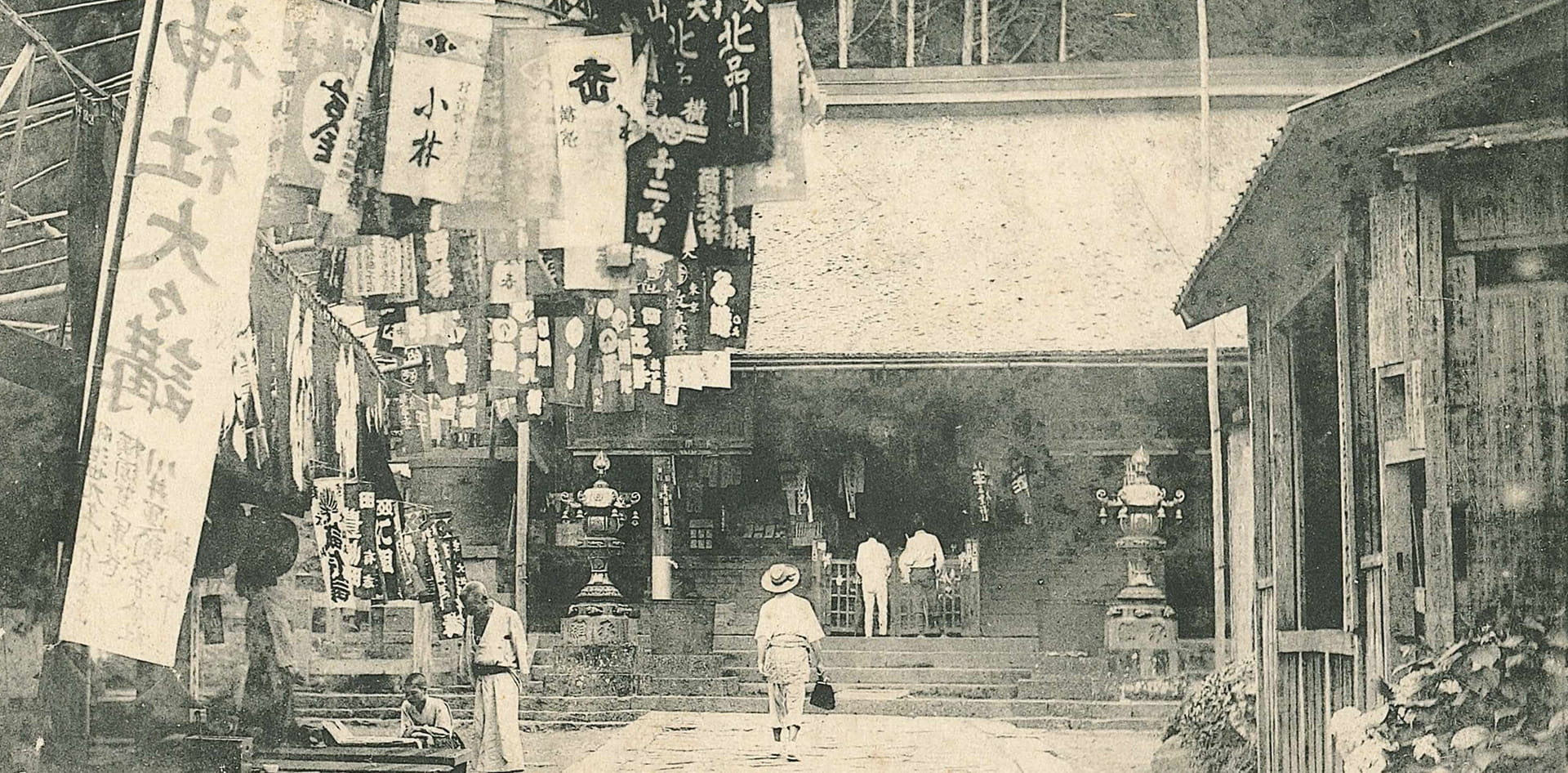
History of Wished Remaining at Oyama Afuri Shrine
The Oyama Afuri Shrine has been loved by many people. The origin of its history dates back more than 2,200 years. We introduce the "history of wishes" remaining at Oyama Afuri Shrine, along with many photographs.
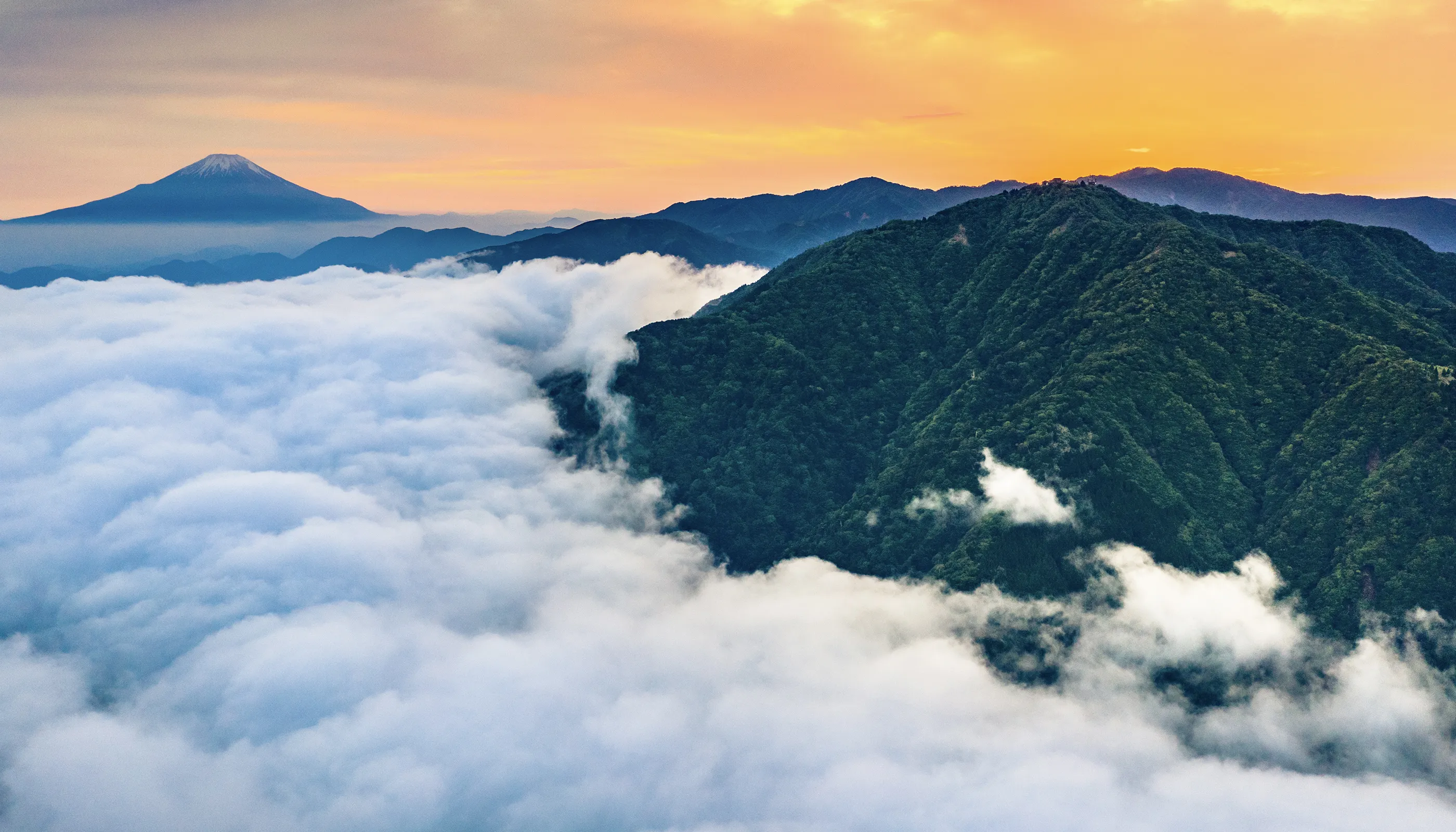
Over
2200
years ago
Oyama Afuri Shrine is a Shikinai-sha shrine said to have been founded more than 2,200 years ago in the reign of Emperor Sujin.Also known as "Amemuri-yama" because of the clouds and fog that often appeared on the mountain, has been a place for praying for rain and a bountiful harvest. Mt.Oyama has a long history of mountain worship, and Jomon pottery used in rituals has been excavatedfrom the summit of the mountain.
Nara
period
Since the Nara period, Mt.Oyama flourished as a sacred mountain for the syncretization of Shinto and Buddhist teachings,and it was designated as a national shrine in the Engi-shiki compiled in the Heian period. Since that time, Afuri Shrine has continued to be a spiritual center for the people.
Under the
samurai
government
Under the samurai government, Oyama Afuri Shrine is a place of prayer for the perpetuation of military fortunes.It is said that when Minamoto no Yoritomo raised his army to overthrow the Heike clan, he deposited his own sword at the shrine. Later, this event became widely known to the public, and people began to deliver wooden swords to the shrine. This is the origin of the "Osamedachi" tradition that continues to this day. It is said that not only the Minamoto clan, but also the Ashikaga, Hojo, Tokugawa, and other shoguns of the Edo period worshipped at the shrine.
Edo
period
Around the Edo period, Afuri Shrine, along with the name of Sekishon Daigongen, was revered by the general public. It is recorded that as many as 200,000 worshippers make the "Oyama Pilgrimage" every year. Its immense popularity made the ground of the shrine crowded, and it is said that the pilgrimage route to Mt. Oyama was developed as Oyama Kaido, which also contributed to the development of the surrounding towns. This "Oyama Pilgrimage" has been told in classical rakugo, as well as in numerous ukiyoe and traditional performing arts.
Since that time, pilgrimages to Mt. Oyama were conducted by groups called "Ko", which were formed by people who shared the same religious beliefs. People of the "Oyama Ko" made pilgrimages to Mt. Oyama to pray for a good harvest and safety of the local community. On the other hand, the priests who ran the Shukubo were called "Goshi" and as guides in the grounds of the shrine, they took care of visitors and served as intermediaries to the shrines. It was customary for visitors to purify themselves at a waterfall within the shrine and be purified by a Goshi before ascending to the Afuri Shrine. The shrine was especially crowded during the opening period from July 27 to August 17.
The custom of "Osamedachi", the delivery of a wooden sword, which is said to have originated with Minamoto no Yoritomo, also began to be practiced around this time, and for the common people of Edo, it was considered fashionable to make a pilgrimage to Mt. Oyama. In some areas, it became one of life's rituals to the extent that one was not considered an adult unless he or she climbed Mt. Oyama. For this reason, Mt. Oyama is also called "the mountain of success in life" and "the mountain of fulfillment of all wishes".
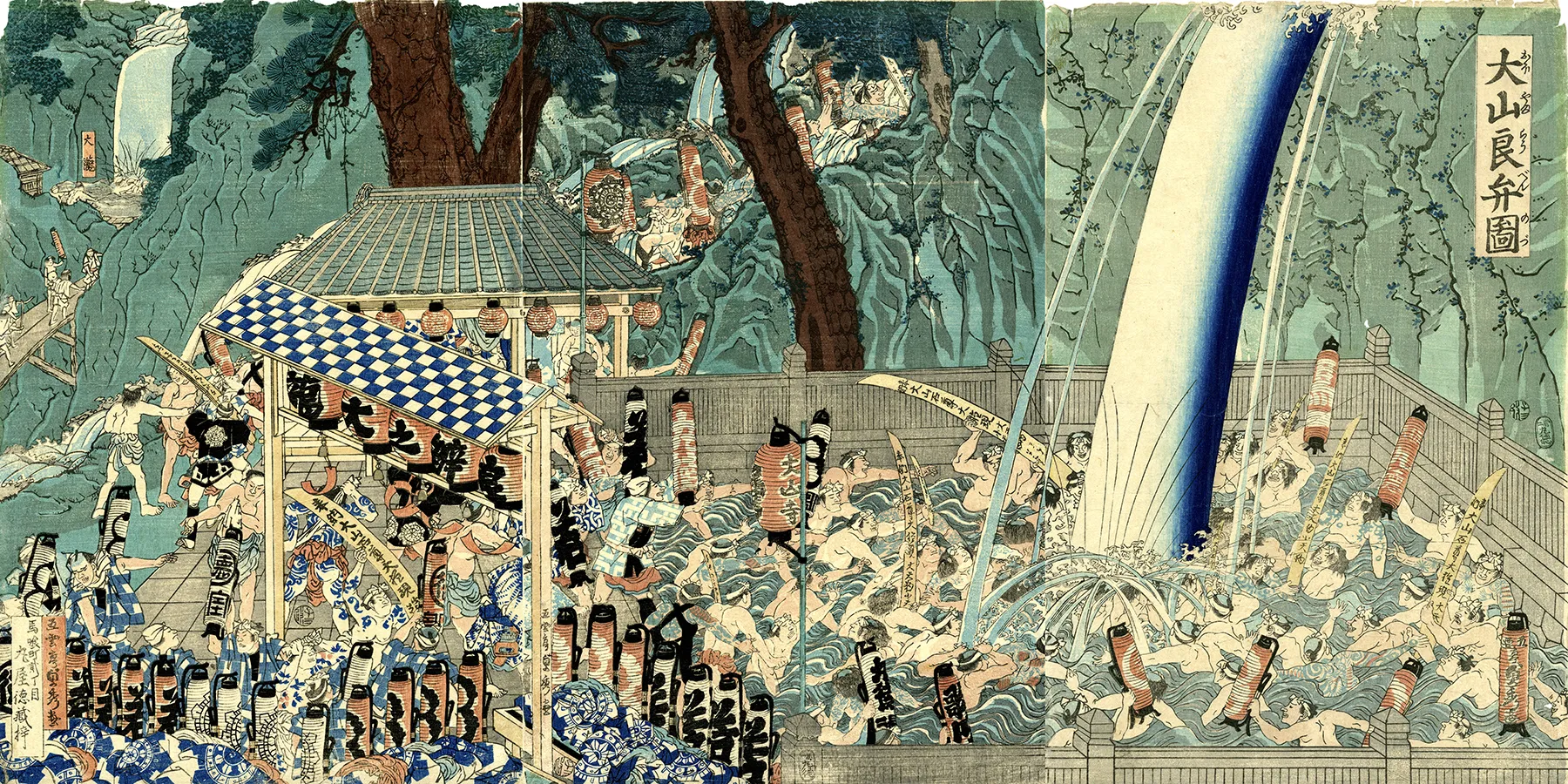
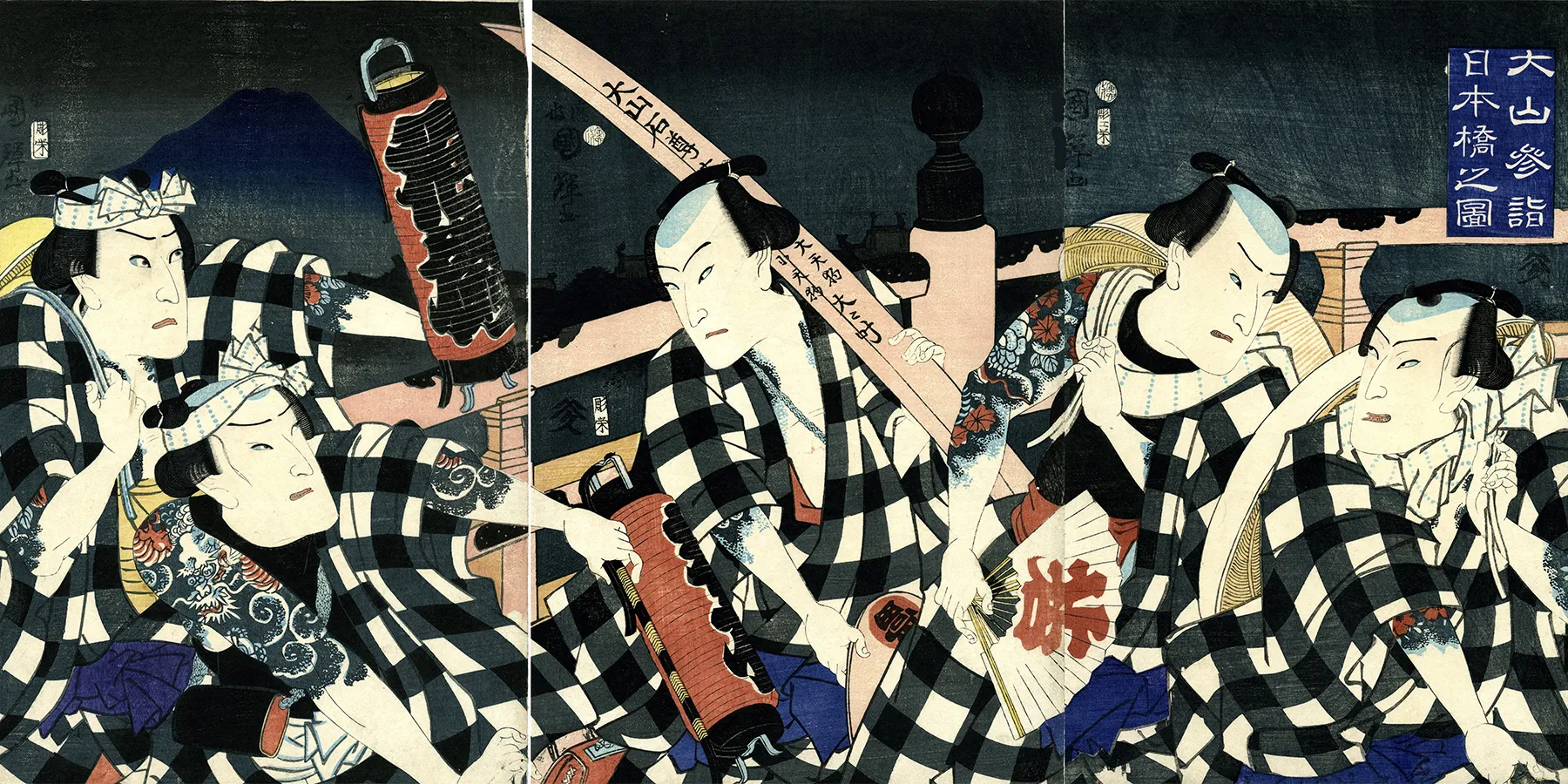
Meiji
period
In the Meiji era, the Shinto/ Buddhism Separation Order was issued, and there was a movement to separate shrines and temples throughout Japan. Against this backdrop, the Afuri Shrine and Oyama Temple were separated and reverted from "Sekison Daigongen" to the old "Afuri Shrine," and the current name "Oyama Afuri Shrine" was used.
In 1873, the Japanese classical scholar "Gonda Naosuke" was invited to serve as the Afuri Shrine Shinto priest, and he was the one who put together the structure of the shrine and established the system that has continued to the present day. With Gonda's reforms in the ground of the shrine, "Goshi" was renamed "Sendoshi" and the confusion caused by the changing times was resolved, and the tradition of the Oyama Pilgrimage has been carried on to this day. Because of these achievements, Gonda was respected as the founder of the revival of Oyama.
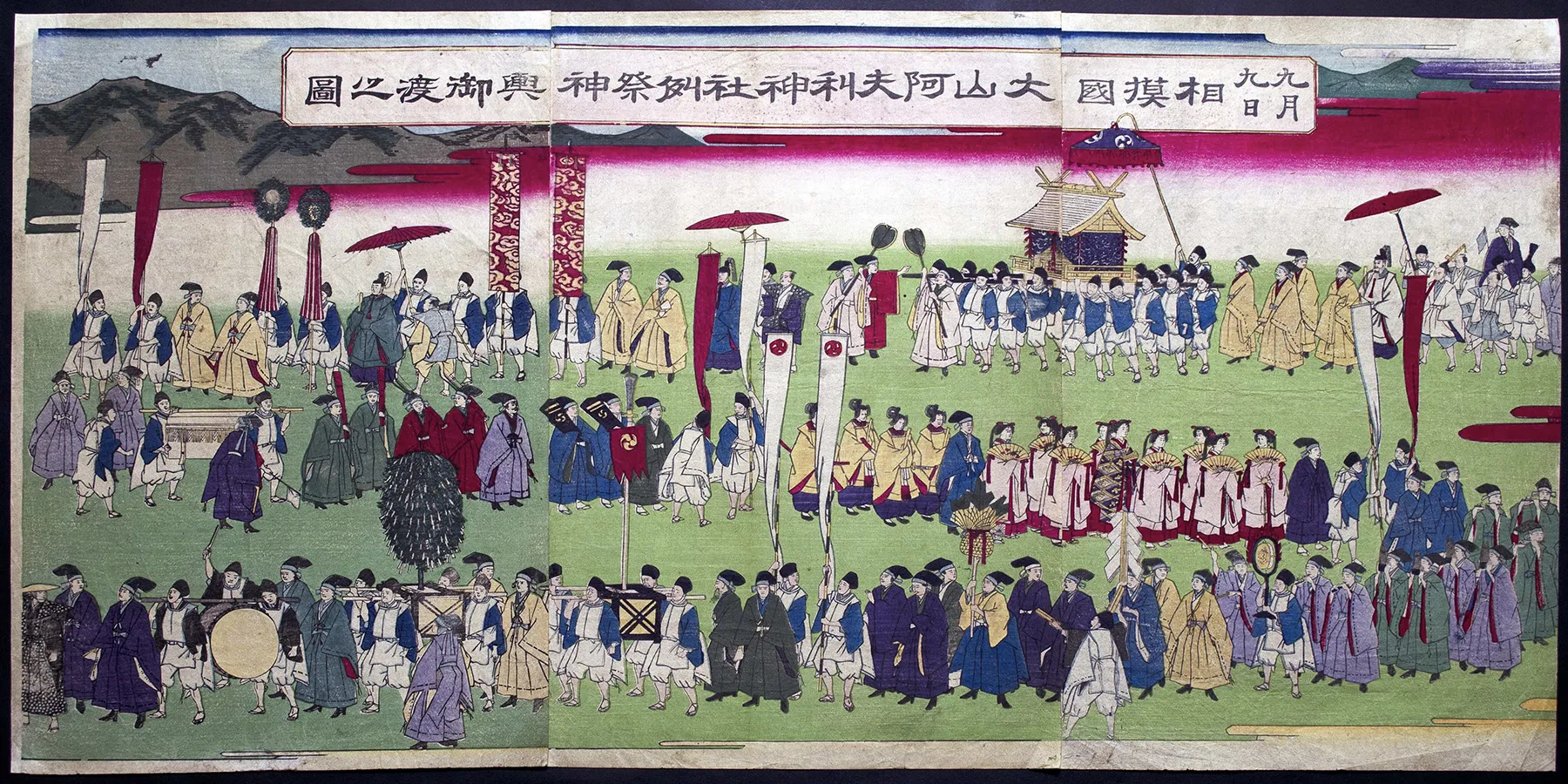
Taisho
period
On September 1, 1923, the Great Kanto Earthquake occurred and caused extensive damage in Mt Oyama. In addition to the earthquake damage, a massive tsunami (landslide) occurred in the mountains, and although many people were able to evacuate just before the disaster, many houses were washed away with the muddy waters. The situation at that time is described by a resident as follows.
Today at 8:00 a.m., heavy rain began to fall, and it was tremendous from the direction of Thunder Mountain.
A great noise was heard from the direction of Thunder Mountain, and large trees in the mountains were pushed out with the water.
And from the direction of Onna-zaka, there are many large trees and stones flowing down, causing people to be startled from the top to the bottom.
The rain was pouring down so hard that the sound of stones and large timbers flowing was becoming more and more terrible, and there was nothing to do but to pray to the gods and Buddha for peace and comfort. I can hardly wait for the dawn of night.
After this damage, the Oyama River, which runs through the shrine, was maintained and transformed into the current Oyama townscape.
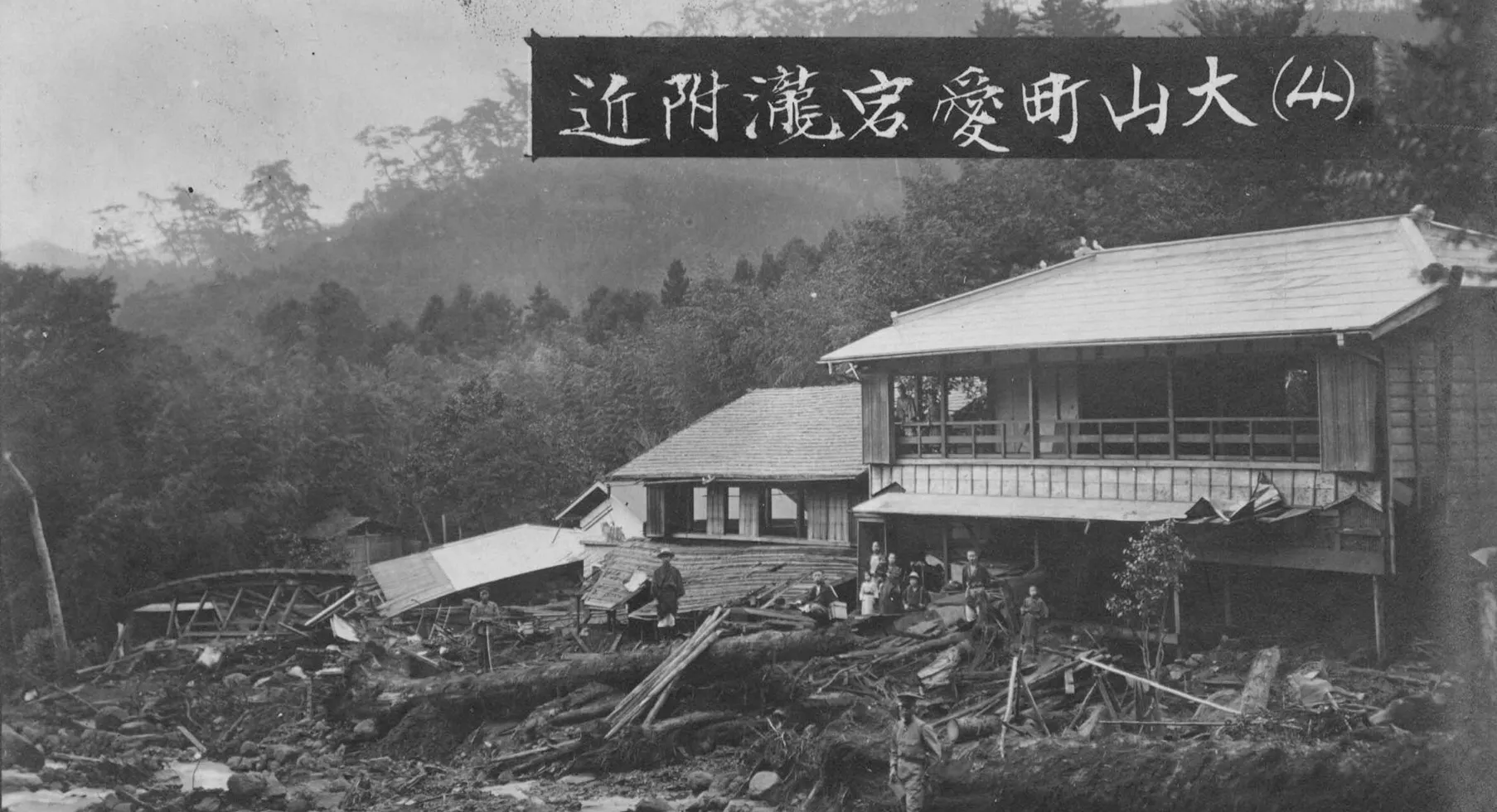
Showa
period
In 1927, Isehara Station on the Odakyu Line opened and became the new entrance to Mt. Oyama. In order to facilitate pilgrimages to the busy Oyama Afuri Shrine, construction of the Oyama Kanko kousaku Railway (present-day Oyama Cable Car) started in 1937 and opened in the same year.
When World War II broke out and the damage from air raids in urban areas became widespread, Mt. Oyama became an evacuation site for school children. Children mainly from the Kawasaki area were evacuated and lived in Shukubo. After the war, as the country recovered, combined with the popularity of travel and mountain climbing, Mt. Oyama became very crowded again. In 1967, Mt. Oyama was designated a national park, attracting even more visitors. In 1977, the construction of Shimosha of the Oyama Afuri Shrine was completed, and the present Haiden of Shimosha was completed.
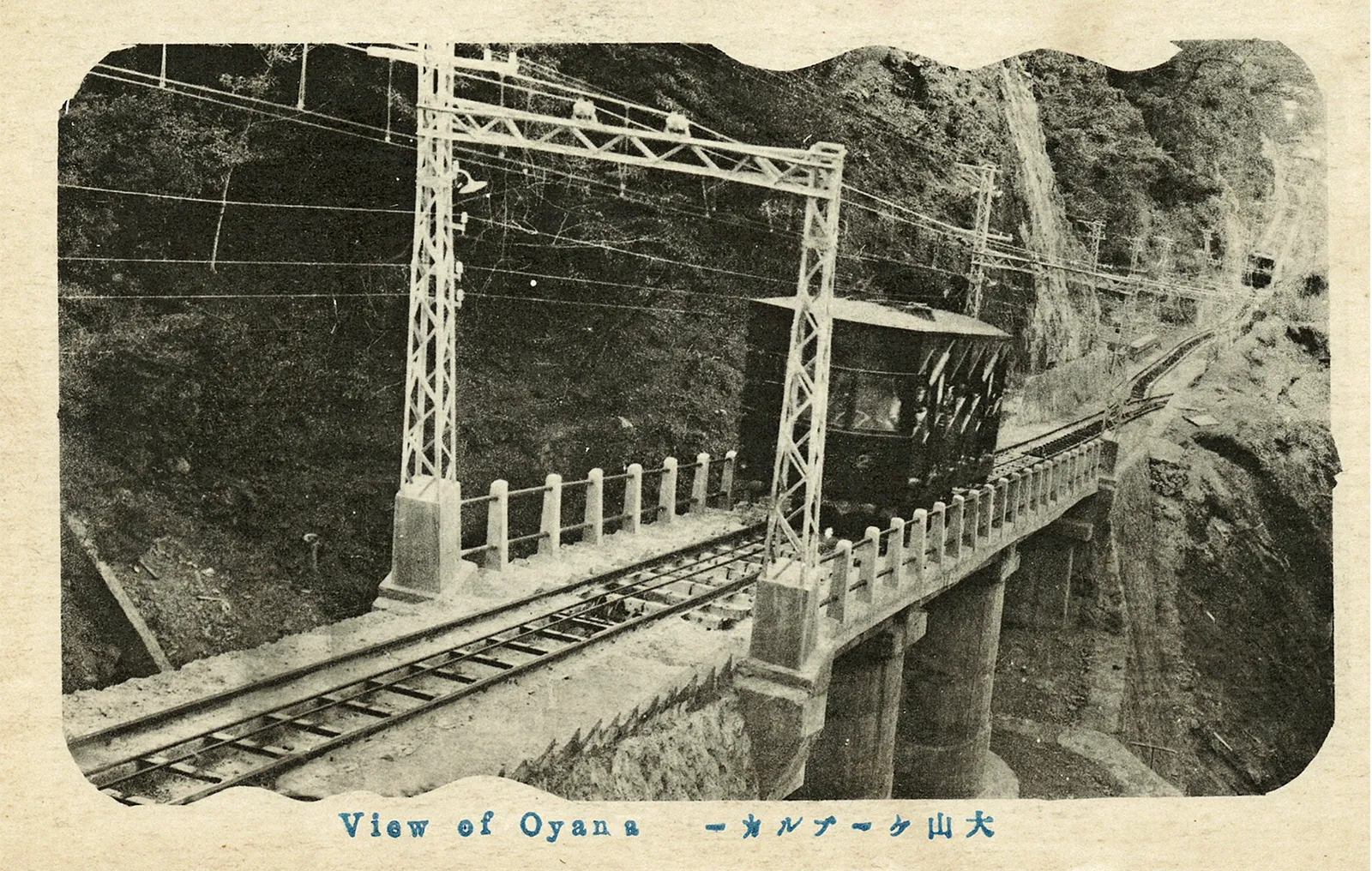
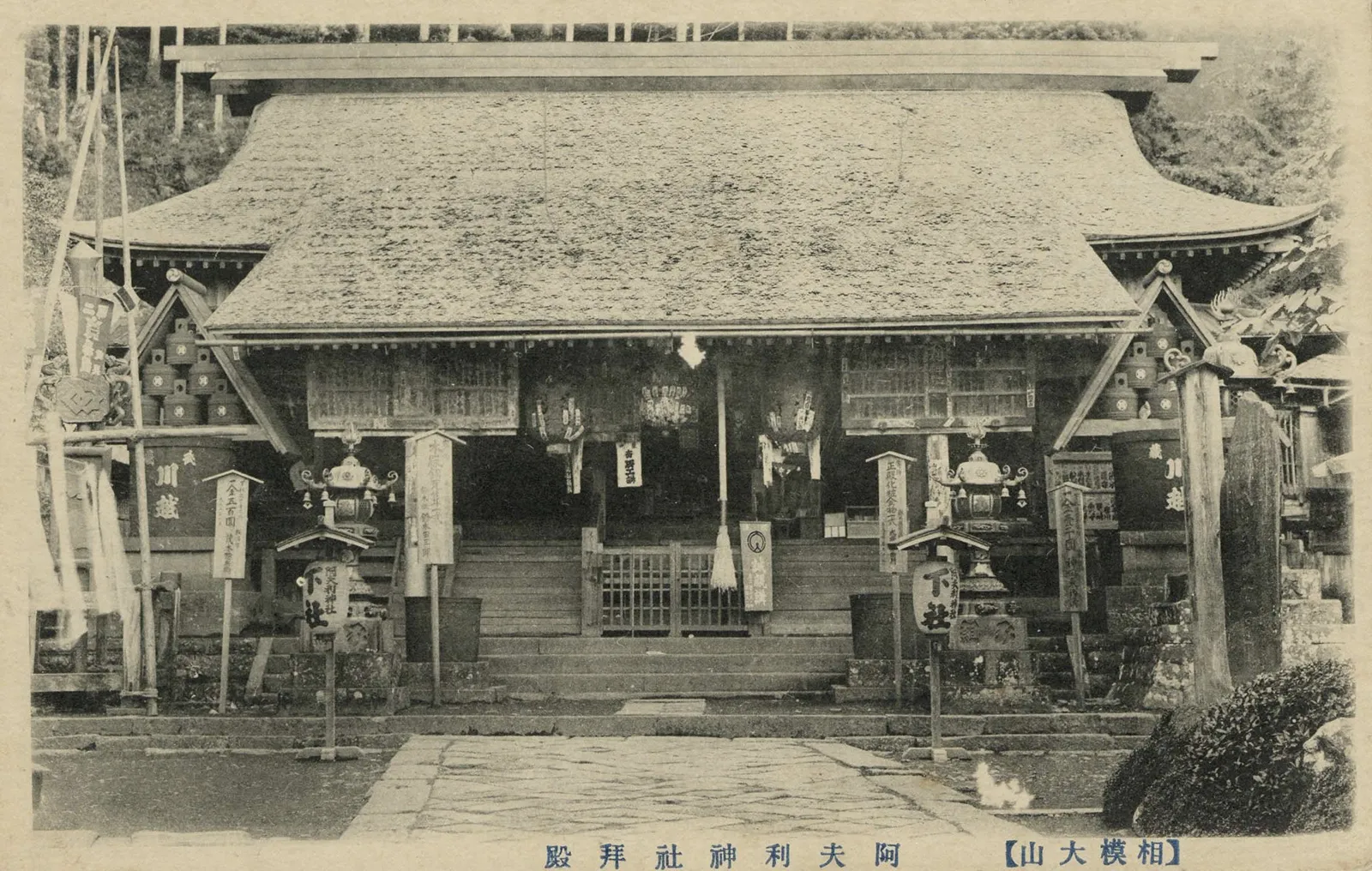
Present
day
Since ancient times, Oyama Afuri Shrine has continued to be a spiritual center for people and to receive all kinds of wishes. Even today, many people visit the shrine to pray, making Oyama a bustling place. In addition, numerous cultural traditions have been handed down to the present, including "Oyama Noh," which boasts a tradition of more than 300 years, and "Yamato-Mai" and "Miko-mai," Shinto ritual dances that have continued since the Meiji era. The history of these wishes will continue to be passed down and spun by many people in the future.